Scoliosis Pain – Sooner or Later, a Problem for Most Patients
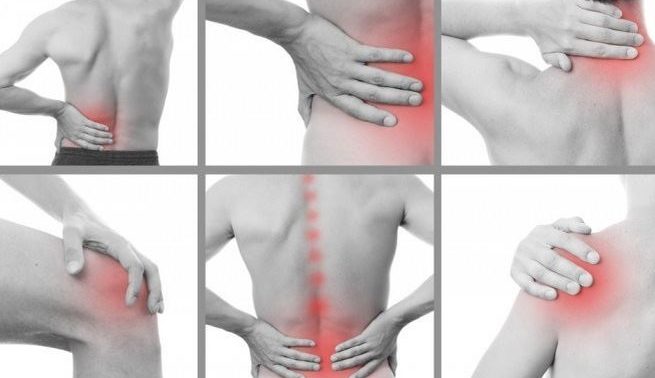
At Hudson Valley Scoliosis , we treat many patients for pain. While scoliosis pain is rare in children, it becomes increasingly common as people age. In fact, research has shown that about 55% of adolescents experience intermittent back pain and up to 92% of adults suffer from pain severe enough that they seek treatment.
This article explains the causes of scoliosis pain, how it presents itself, and the problems with common treatments. We’ll finish by explaining Hudson Valley Scoliosis’ unique approach to treating scoliosis pain and why it is better than the alternatives.
The Hudson Valley Scoliosis approach
Causes of Scoliosis Pain
Scoliosis pain can sometimes occur when underlying (non-scoliosis) spinal conditions are aggravated by postural distortions (scoliosis). In some cases the underlying (non-scoliosis) condition would have developed anyway, and is only painful because it is combined with scoliosis. In other cases the scoliosis causes the underlying condition by putting stress or pressure on various parts of the body.
In all cases, the type of pain and its treatment depends on the underlying spinal condition and how it affects the patient’s unique posture.
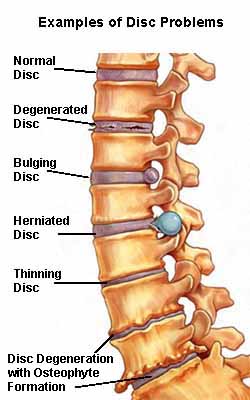
Conditions that cause pain when combined with scoliosis include:
- Disc degeneration seen in the cervical, thoracic and lumbar spine (also known as spondylosis)
- Disc bulges or disc herniations
- Ligament laxity (looseness) in the spinal and pelvic joints (also known as laterolisthesis)
- Inflammation of the sacroiliac joints
- Dislocation of the spinal joints or even fractures of the spine
In order to effectively treat scoliosis pain, a scoliosis specialist must understand the specific spinal condition that is presenting with the scoliosis. Doing so allows them to take a more nuanced approach, rather than an ineffective “one-size-fits-all” approach.
Types of scoliosis pain
Scoliosis related pain can present in multiple areas of the body, such as the upper back (thoracic), lower back (lumbar), neck (cervical), shoulders, hips, and sciatic nerves, and can also cause headaches. Understanding how these various types of pain relate to idiopathic scoliosis and degenerative scoliosis will help you better understand how Hudson Valley Scoliosis can help.
- Lower Back Pain. Intense low back (lumbar) pain is found in a surprisingly large percentage of adolescents with idiopathic scoliosis.
Chronic lower back pain is also very common in adults, even those with a mild scoliosis. Older individuals with scoliosis will have more significant degenerative disc disease, which damages the ligaments that hold the spine in place.
Many adults with scoliosis develop a hunched posture (kyphosis) which is the main cause of their back pain. Significant osteoporosis has also been identified in scientific literature as closely linked with adult scoliosis. If the osteoporosis is severe, it can lead to fractures and associated dislocations of the scoliotic spine
Read more about lower back pain in scoliosis >
- Headaches. Scoliosis patients often report chronic headaches. These headaches are usually due to tension in the neck muscles. Due to the postural strain caused by scoliosis, many individuals find that they experience both muscle tension and nerve pressure. Forward head posture is common in both adolescents and adults with scoliosis. This type of posture creates both muscle tension and spinal misalignment in the neck. This can trigger both neck pain (especially the pain found at either the base of the neck or under the skull) and a variety of associated headaches, such as migraines, cluster headaches, and the tension type headache that comes from a pinched nerve at the top of the neck.
Read more about scoliosis headaches >
-
- Hip Pain. Individuals with scoliosis will sometimes notice that they have one hip that appears higher than the other or that sticks out more. This is often more noticeable than the actual scoliosis curvature in the spine. This imbalance can lead to pain and discomfort after walking or standing for long periods.
Treatment focused on improving this misalignment and mobility of the hips combined with treatment of the underlying scoliosis can help to truly manage this type of pain.
Read more about scoliosis hip pain >
- Hip Pain. Individuals with scoliosis will sometimes notice that they have one hip that appears higher than the other or that sticks out more. This is often more noticeable than the actual scoliosis curvature in the spine. This imbalance can lead to pain and discomfort after walking or standing for long periods.
- Spinal Stenosis and Sciatica. This type of pain is caused by misalignment of the spine combined with early degenerative joint disease (arthritis). These two conditions cause a narrowing of the space within the vertebra (facet joints) of the spine that the nerves passes through This narrowing is referred to as spinal stenosis.
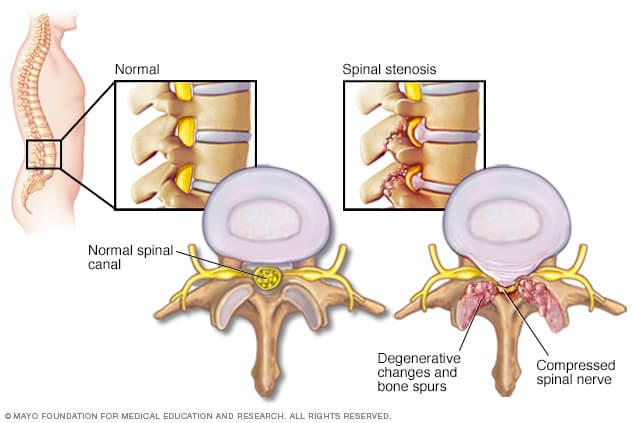
The narrowing of the space within the spine puts pressure on nerves, which leads to sciatica, pain, numbness, or tingling running from the buttocks and down the backs of the legs. This condition is particularly common in older patients with more severe curves.
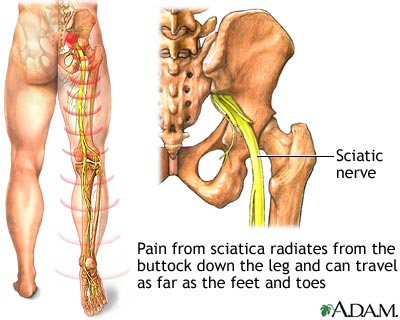
Once this condition progresses to a severe narrowing treatment choices become limited. If left untreated, orthopedic surgery (such as laminectomy) and pain medication may be the only options.
Read more about sciatica and scoliosis >
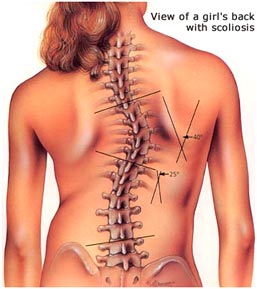
- Shoulder Pain. The ligaments and muscles in one’s shoulders are often impacted by scoliosis. Any type of scoliosis shoulder pain is most often noted on the side of the body that the spine curves away from since the body will naturally try to pull the spine back into place. Over time, pain can be noted on both sides, as the other shoulder aches from bearing excess weight.
Read more about scoliosis shoulder pain >
- Post-surgical Pain. Those who choose to undergo spine surgery, whether in the form of spinal fusion vertebral body tethering or osteotomy, have a high likelihood of experiencing some sort of post-surgical pain. Short term discomfort is typical during recovery, but more severe, and long term, pain can occur if there are complications. Yes, there are severe complications like rod breakage, but these are rare. Rarely surgeons will perform an osteotomy to shorten or lengthen the leg of a patient with a severe leg length discrepancy. It can take months to recover from osteotomy and walk normally.
Read more about scoliosis surgery >
- Fractures
of the spine like spondylolisthesis are seen in any age patient. Fractures due to severe osteoporosis are only found in cases of adult scoliosis. The two main causes are stress fractures in the vertebra or degeneration of the facet joints. Stress fractures can be brought on by repeated trauma (high impact sports) or can be caused by an isolated incident (an accident or fall). Osteoporosis is commonly found in patients with scoliosis.
Read more about spondylolisthesis >
Common treatments for scoliosis pain
General practice pediatricians, orthopedists and physical therapists often attempt to treat pain with options that act more like a band-aid than a permanent solution. The most common treatments are:
- Pain medications . Doctors frequently prescribe NSAIDs (Non-steroidal anti-inflammatory drugs) like aspirin or ibuprofen. While these may lead to temporary relief, there can be serious health problems associated with their long-term use, such stomach ulcers, kidney failure and even stroke. Prescription painkillers are also frequently prescribed, and addiction is of serious concern.
- Epidurals.
Most pain management doctors will not perform more than 3 steroid injections, such as the epidural, on a single patient. It is a very toxic medicine that if used in excess can cause significant bone loss increasing the incidence of fractures. Common side effects are anxiety and sleeplessness.
Read more about scoliosis and epidurals >
- Massage . While this is an excellent supplement to a full scoliosis treatment program, massage by itself offers only temporary relief.
- Physical therapies. Standard physical therapies like ultrasound, electrical stimulation, and heat, have not been shown to address the underlying structural issues of scoliosis.
- Standard chiropractic care
. While standard chiropractic care can be very effective for many spinal problems, it has not been shown to be effective as a stand alone treatment for scoliosis.
While none of these treatments should be completely discarded, they only address the symptoms and not the cause of scoliosis pain. Because of this, they will only lead to temporary pain reduction at best.
Effective treatment must address the true root of the patient’s scoliosis pain. This can only be done by addressing the underlying spinal condition and how it is interacting with the patient’s posture.
Hudson Valley’s Approach To Scoliosis Pain
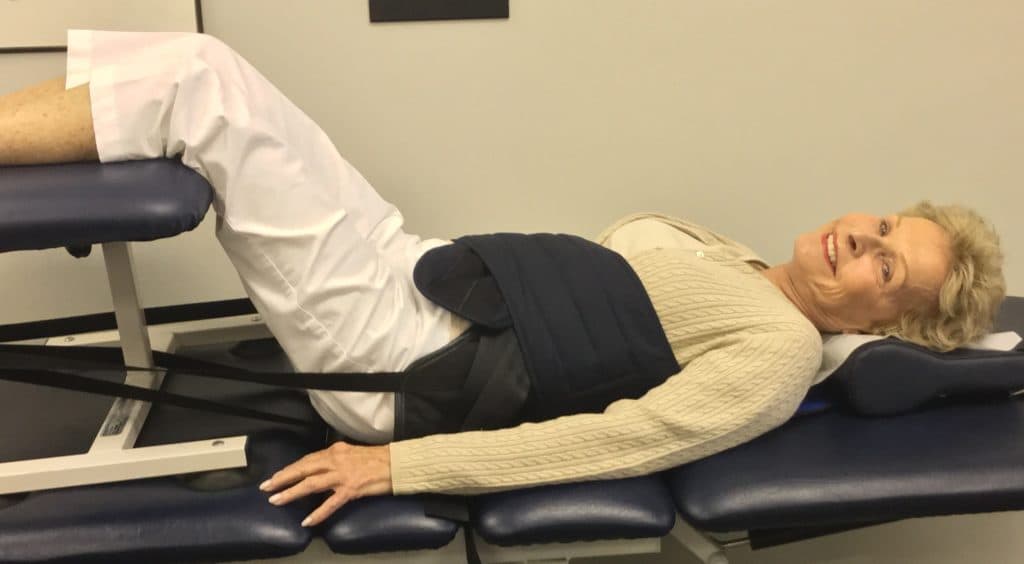
The goal of any treatment program for scoliosis pain must be to correct both the underlying (non-scoliosis) spinal condition and the postural distortion (scoliosis) that is aggravating it.
At Hudson Valley Scoliosis, we create customized home-based care programs that pinpoint and treat the patient’s underlying cause of pain. We provide patients with easy to perform exercises that strengthen ligaments and muscles, help to reduce nerve inflammation, and address how the brain and body affect scoliosis, rather than focusing on just the spine itself. Other methods that may be used to effectively reduce or eliminate pain:
- Custom Designed Scoliosis Thoracolumbosacral Orthosis (TLSO) – The use of a 3D custom designed over-corrective scoliosis back brace is used in approximately 30% of our scoliosis cases. In cases of adult scoliosis pain, this modern brace can be a very effective addition to the treatment program, eliminating pain and improving posture.
-
- Spinal Decompression – Both Lumbar Decompression (low back ) and Cervical Decompression (neck) may be used to gently stretch the compressed spine. Increasing blood flow and nutrients to the spine to reduce pain and inflammation and promote healing.
-
- Targeted Stretches – An individually designed program of stretches that address a patient’s specific area of concern to promote strength, flexibility and reduce pain, spasm and inflammation.
- Most importantly, we treat the root cause of a patient’s pain rather than relying on temporary pain relief medications or generalist approaches like standard physical therapies or standard chiropractic.
- Read more about our unique approach to scoliosis treatment >
Contact us today for your free consultation to learn how Hudson Valley Scoliosis can help alleviate your scoliosis pain.

